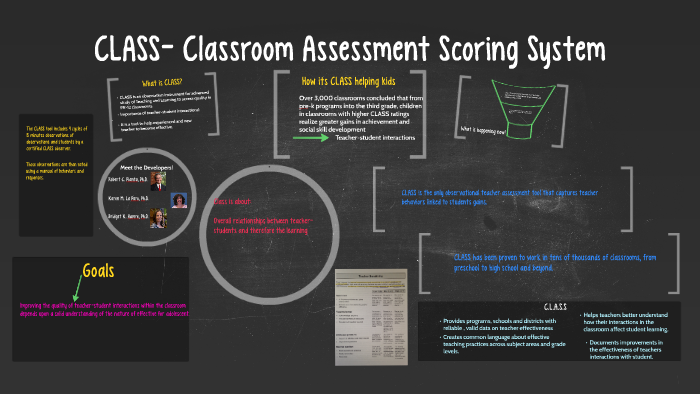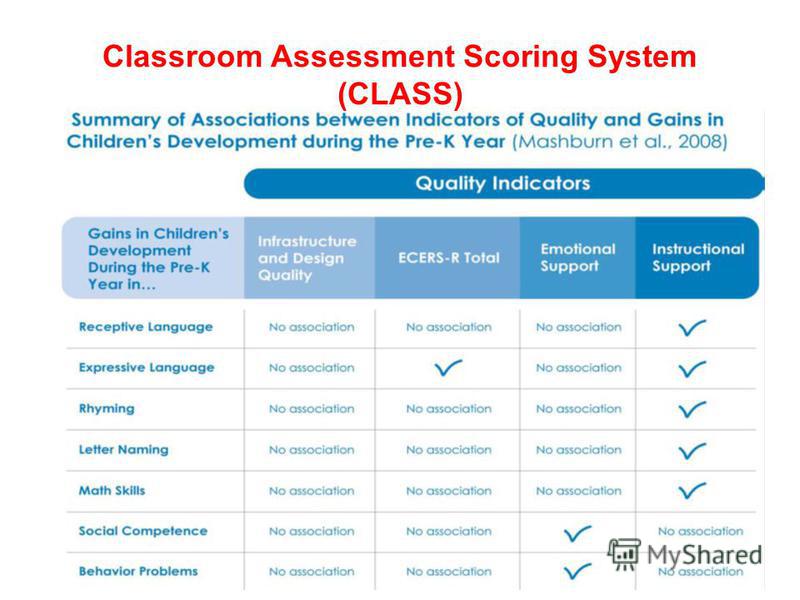

Recent studies have focused attention on the quality of interactions children experience and are, therefore, thought to influence children more directly. At least in part due to increasing calls for accountability in education systems, substantial attention is being paid to identifying the kinds of environments that support young children’s learning.

Process quality is harder to assess as it focuses on the quality of interactions that children experience directly such as the warmth and responsiveness of the staff that care for children. For example, when staff-child ratios are better, staff may have more opportunities to have positive interactions with children. Structural quality is thought to impact children indirectly by setting up the conditions in which children’s direct experiences with the environment take place. As a result, governments tend to focus on regulation of these characteristics. Structural quality indicators (e.g., staff/child ratios, staff education) generally refer to aspects of quality that are more easily quantifiable. However, others have failed to report such linkages. Some studies have demonstrated that higher-quality ECEC is associated with improved language development, cognitive functioning, social competence, and emotional adjustment. The funders had no role in study design, data collection and analysis, decision to publish, or preparation of the manuscript.Ĭompeting interests: The authors have declared that no competing interests exist.įor preschool aged children, enrollment in Early Childhood Education and Care (ECEC) in many countries is now the norm. Prakesh Shah is supported by an Applied Research Chair in Reproductive and Child Health Services Research from the Canadian Institutes of Health Research (APR-126340). This is an open access article distributed under the terms of the Creative Commons Attribution License, which permits unrestricted use, distribution, and reproduction in any medium, provided the original author and source are credited.ĭata Availability: All relevant data are within the paper and its Supporting Information files.įunding: All phases of this study were supported by a grant entitled “What is the impact of early childhood education and care (ECEC) on children’s developmental health" (#234474) from the Canadian Institute for Health Research. Received: AugAccepted: NovemPublished: December 30, 2016Ĭopyright: © 2016 Perlman et al.

Given the multitude of factors that impact child development it is encouraging that our analyses revealed some, although small, associations between the CLASS and children’s outcomes.Ĭitation: Perlman M, Falenchuk O, Fletcher B, McMullen E, Beyene J, Shah PS (2016) A Systematic Review and Meta-Analysis of a Measure of Staff/Child Interaction Quality (the Classroom Assessment Scoring System) in Early Childhood Education and Care Settings and Child Outcomes. Greater consistency in study methodology is urgently needed. Substantial heterogeneity in use of the CLASS, its dimensions, child outcomes and statistical measures was identified. In the systematic review, significant correlations were reported mainly from one large dataset. All associations were in the expected direction. Of the 14 meta-analyses we conducted, associations between Classroom Organization and Pencil Tapping and between Instructional Support and SSRS Social Skills were significant with pooled correlations of. Most studies had moderate to high risk of bias. Thirty-five studies were systematically reviewed of which 19 provided data for meta-analyses. Searches and data extraction were conducted by two independent reviewers.

Studies that measured association between the CLASS and child outcomes for preschool-aged children who attended ECEC programs were included after screening by two independent reviewers. Searches of Medline, PsycINFO, ERIC, websites of large datasets and reference sections of all retrieved articles were conducted up to July 3, 2015. Our objective was to evaluate the association between the CLASS and child outcomes. It is a relatively new measure that is being used increasingly for research, quality monitoring/accountability and other applied purposes. The CLASS is made of three domains that assess Emotional Support, Classroom Organization and Instructional Support. The quality of staff/child interactions as measured by the Classroom Assessment Scoring System (CLASS) in Early Childhood Education and Care (ECEC) programs is thought to be important for children’s outcomes.


 0 kommentar(er)
0 kommentar(er)
